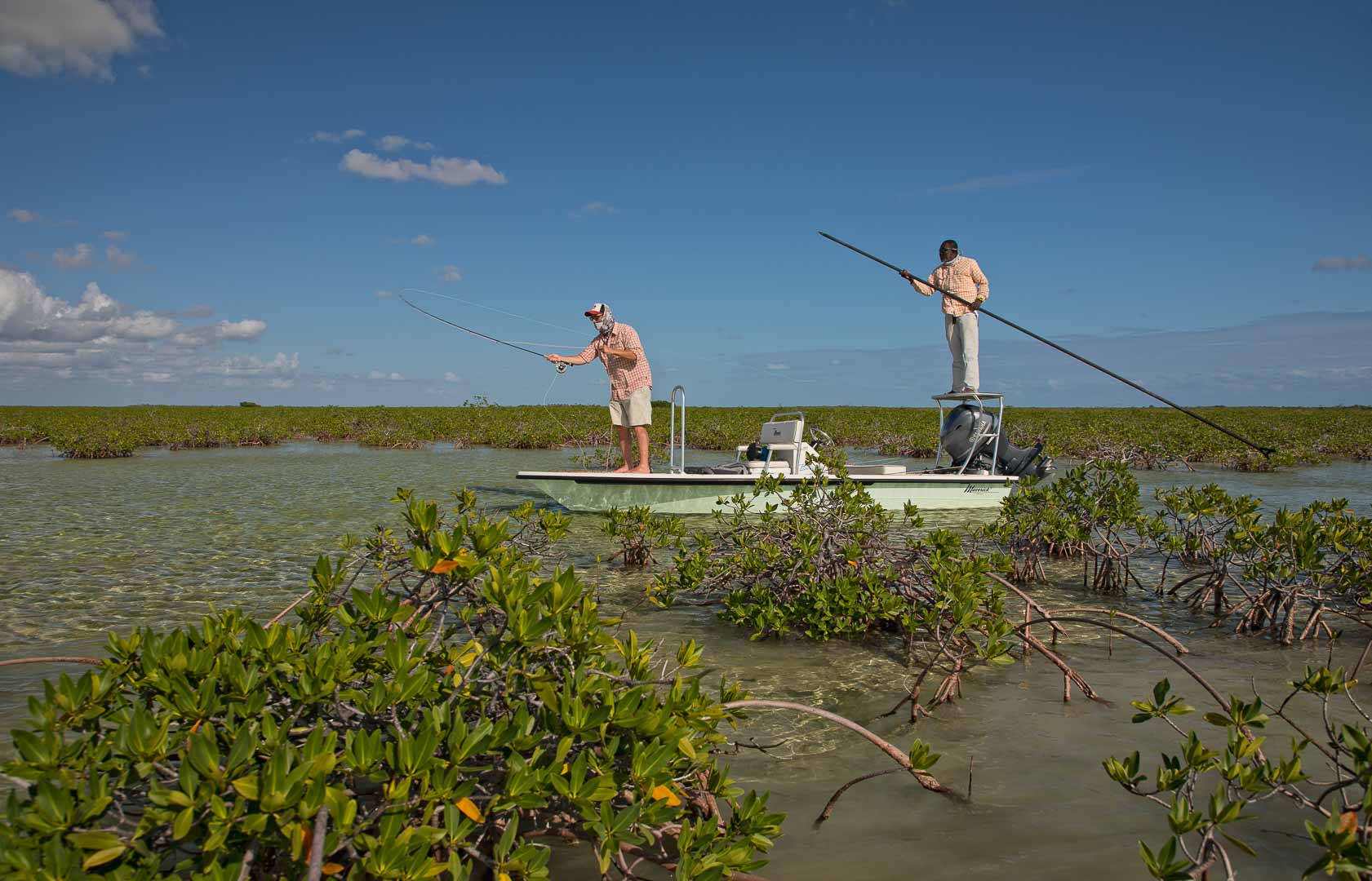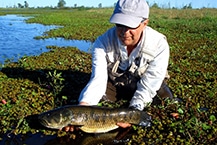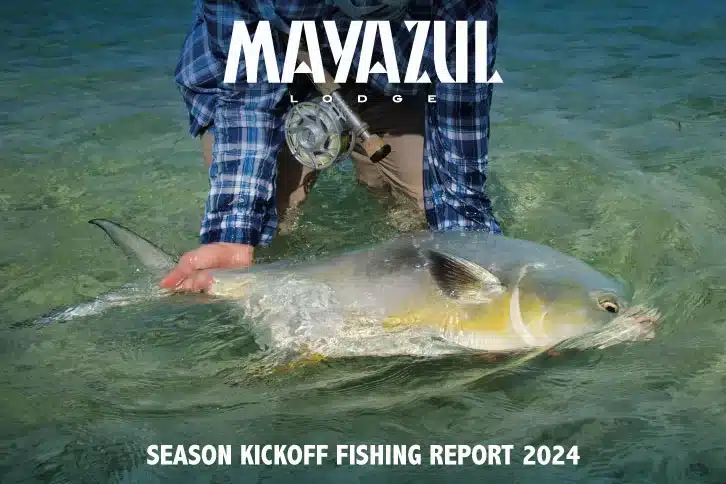Expert tips for fly fishers in search of Argentina’s elusive River Wolf
Tararira (Hoplias malabaricus) are native to Argentina and popular among regional flyfishers. Their behavior is comparable to pike or largemouth bass. Mainly living in stagnant shallow waters, they provide great top-water action and are known for their acrobatics. Although tararira are aggressive at times, they can also be a challenge. Especially in cooler water, when their metabolism slows and they become inactive. In theParaná River Delta, over the course of a day they’ll go from ignoring flies, to attacking a swimming duck. Quality fish in this area range from 3 to 6 pounds, but 10+ pounders have been caught. Ultimately, tararira are a unique gamefish that grow large, provide great sport, and are yours to discover.
Conditions
The best fishing for tararira typically occurs in the morning when the sun is rising, as well as in the evening. Considering their poor eyesight, they need sufficient light in order to track their prey. Moderate to heavy cloud cover can produce some good tararira fishing, depending on the water temperature. Also, the less wind the better! Wind cools the water and can create enough turbulence to turn off the dry-fly bite. During midday heat, with high sun levels and few clouds, tararira move to shallower water and are less active.
Approach
How you approach tararira will depend on water conditions. In clear water, a slow and cautious approach is necessary to avoid spooking them. However, if the water is murky you can get a little closer to the fish.
Casting requires a certain degree of accuracy, placing your fly in and around weeds and various structural elements where they seek shelter. Cover as much water as possible and keep in mind that the closer the fly is placed to structure, the better chance of evoking a vicious strike.
Strike
Tararira takes are extremely fast and aggressive, resulting in the water exploding right before your eyes. Remember, it’s important to maintain composure and set the hook firmly!
Fight
Once hooked, tararira instantly run toward vegetation and in-river snags in order to escape. It’s up to you to hold firmly and turn the tides in your favor. Runs are typically energetic and short, powered by the fish’s anaerobic muscle makeup. They’re also known to jump, which can make for awesome acrobatic displays.
Fly-Fishing Equipment
We recommend 6- and 7-weight rods for three reasons: 1) Tararira fishing can require long-distance deliveries, using heavy wind-resistant flies. 2) Due to their bony mouths you need a stronger rod for a firm, effective hook-set. Another advantage of using a heavier rod is 3): They allow you to pull your fly though areas with dense weed growth.
(Lighter rods and tackle can be used for throwing dry flies. This kind of fishing is very rewarding.)
Reels with a suitable drag and well balanced to the rod are also necessary, although the fish can usually be controlled with the line, alone.
The most effective lines are weight-forward versions with large diameter bodies in order to turn over heavy flies. We use leaders in the 15 to 30 pound range—approximately 5 to 6 feet long. Short leaders are perfect. Considering their skinny-water habitats, your fly doesn’t need to sink very deep. Wire bite tippets are also crucial because tararira have sharp teeth. Use 15 to 30 pound. Other useful tools include quality pliers for removing hooks, sturdy boots built for wading in shallow water, and a backpack or hip-pack for extra gear.
Your fly boxes should include a variety of surface patterns and streamers. Surface files include poppers, mice, gurglers, and large terrestrials. Classic streamers include andino-deceivers and baitfish patterns with flash. Flies should also be tied with weedguards for a clean retrieve.
[Fergus Kelley is an english angler and a passionate guide, fly tyer, and photographer. He enjoys traveling to unique fisheries around the world and, with a background in fisheries biology, has been able to study many environments as a member of numerous projects. Read more about fishing for Tararira with Nervous Waters, here.]




